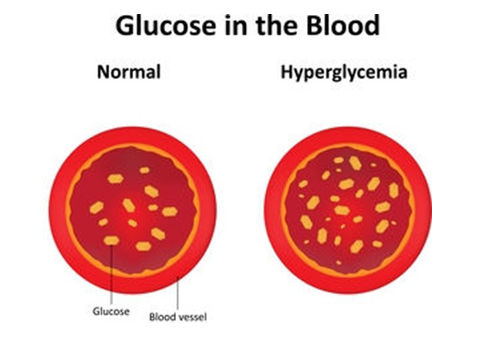The first two articles in this series on blood sugar regulation were regarding a lab measurement in the human body known as A1c and a food measurement known as the glycemic index, respectively. In this third article we discuss insulin sensitivity vs. insulin resistance. In order to get the most from this article please read the first two articles in previous blog posts below, which we will refer back to here.

Influences over Blood Sugar
There are many components of human physiology that affect our blood sugar level. This includes several interrelated hormones, the state of our autonomic nervous system, our emotions, our physical activity level, the amount of body fat and lean (muscle) tissue, amount of dietary fat consumed, type of dietary fat consumed, dietary fiber consumption, the physical structure of our cell membranes, certain nutrients, etc.
One of the key hormones involved in regulating blood sugar is known as insulin. One of the main jobs of insulin is to escort glucose, aka blood sugar, out of the blood and into the cells, where glucose can then be used to fuel cellular processes. When our cells are responsive, or sensitive to insulin, this process works properly, and glucose remains at appropriate levels in the bloodstream because it is being efficiently escorted into the cells to use for energy.
When our cells are not responsive, or resistant to insulin, the process of escorting glucose from the blood into the cells does not work as well. As a result, the glucose level in the blood remains higher than is desirable as it cannot get out of the blood and into the cells as readily. In our first article in this series on A1c we discussed some of the significant consequences of elevated blood sugar levels.
Insulin Sensitivity vs. Insulin Resistance
In our second article in this series on the glycemic index, we saw different blood sugar response curves for 4 sample people consuming straight glucose, then the same quantity of carbohydrate from bananas. We noted that the response curves varied quite a bit between individuals. How could there be such a variation in the glucose response curves when each subject was given the same quantity of food with the same glycemic index?
The answer is that some people’s cells are sensitive to insulin, while other people’s cells are resistant to insulin. Those experiencing insulin resistance have higher glucose response curves than those experiencing insulin sensitivity, no matter what they eat, even low glycemic foods! In our glucose vs. banana comparison to determine the glycemic index of bananas as described in the previous article, you may have noted that subject A had the lowest glucose curve for both glucose and banana consumption, while subject D had the highest glucose curve for both glucose and banana consumption. Subject A’s cells are sensitive to insulin, while subject D’s cells are resistant to insulin. Subjects B and C are in between on the insulin resistance vs. insulin sensitivity spectrum.
The glycemic index is a rating of the blood sugar response curve in a sample of humans RELATIVE TO THEIR GLUCOSE RESPONSE CURVE. It is not a rating of what will happen when that food is consumed by a particular individual. The state of insulin sensitivity vs. insulin resistance exerts a much greater influence. In insulin resistant individuals, every food consumed will cause a greater increase in blood sugar levels compared to someone else eating the same food who is insulin sensitive.
IF YOU HAVEN’T ALREADY, THIS WOULD BE A GREAT TIME TO REVIEW THOSE GLUCOSE RESPONSE CURVE CHARTS IN THE GLYCEMIC INDEX ARTICLE BELOW.
Insulin resistance is the hallmark of type II diabetes, pre-diabetes, and slightly elevated blood sugar. People with type II diabetes make plenty of insulin, in fact often times extra insulin, but their cells are resistant to it. That is why people with diabetes have higher glucose levels than people without diabetes, even when they eat the exact same food. This is because when insulin attempts to escort glucose out of the blood and into the cells, the cells are resistant to that process occurring as efficiently as it does under optimal conditions of insulin sensitivity.
Conventional Advice
It’s very important to note that carbohydrates are not the cause of insulin resistance. The body not being able to regulate carbohydrates well is the effect of insulin resistance. However, the usual advice when this occurs is to limit the quantity of carbohydrates in the diet. Unfortunately, this process does very little, if anything, to correct insulin resistance, the underlying cause of the problem in the first place.
In fact, many low carbohydrate, low glycemic foods actually promote insulin resistance! Most doctors however advocate the consumption of these foods to their diabetic patients. No wonder these same doctors tell these patients that there is no cure, and that they will be on medication for the rest of their lives!
A Better Solution
In order to recover from type II diabetes, pre-diabetes, or slightly elevated blood sugar, the root causes of insulin resistance need to be addressed. When you stop causing insulin resistance, your cells become more sensitive to insulin, and blood sugar levels start to come down as a result.
In the next article in this series we will look at the major causes of insulin resistance and how to reverse the process and therefore allow elevated blood sugar levels to come back down to a more healthful range.
